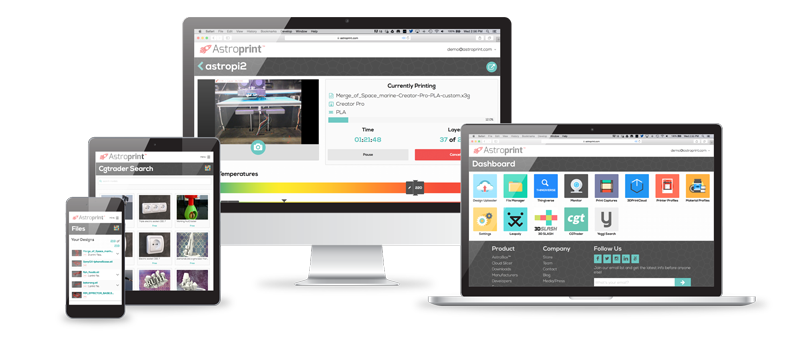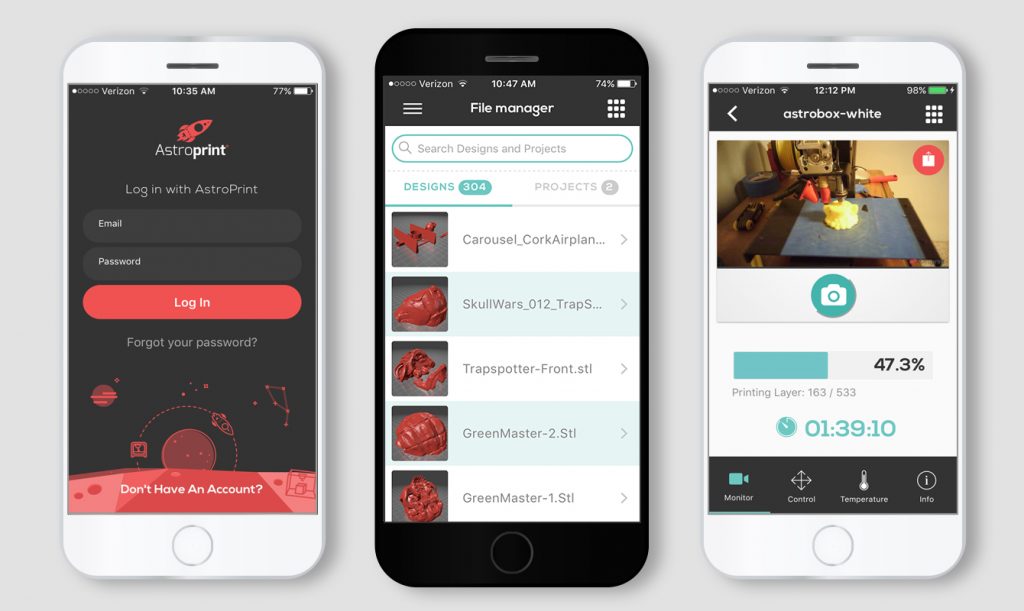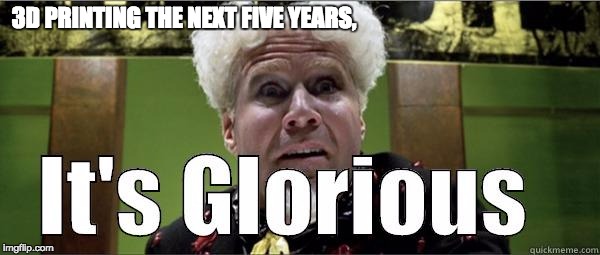This is a guest post in our series looking at the future of 3D Printing. To celebrate 5 years of reporting on the 3D printing industry, we’ve invited industry leaders and 3D printing experts to give us their perspective and predictions for the next 5 years and insight into trends in additive manufacturing.
Drew Taylor is co-founder and CEO of AstroPrint. Often called “The Android of the 3D Printing Industry,” AstroPrint produces software that makes 3D printers simple to operate, cloud enabled, and connected to a 3D Printing App Marketplace for 3rd party content. AstroPrint recently completed their second successful Kickstarter campaign.
3D Printing the Next Five Years by Drew Taylor
What will drive innovation in the next 5 years for 3D Printing?
This formula:
Simplicity + Content = Mass Adoption
As 3D printers become incredibly simple to use, and connected to the content that people wish to print, 3D printing will enter into the next wave of mass adoption. Not just for the consumer space, but for medical, small business, the food industry, and even industrial use.
In the next 5 years, the two primary drivers to ‘simplicity + content’ will be: Cloud Connectivity and Software Standardization.

Why do 3D printers need Cloud Connectivity, when 2D printers never needed a cloud?
There are two primary reasons.
3D printers gain value from 3rd party content, 2D printers do not. You would never buy content (i.e. files) for the purpose of printing on your 2D printer, so there is no reason to connect it to content repositories. However, you will buy content for your 3D printer. For consumer use, that could be purchasing toys for your kids. For medical use, printing specific tumor shapes for research purposes. For industrial, printing an expensive part, under secure conditions, designed by a third party. All of these cases require a sophisticated and stable 3D printing cloud infrastructure.
2D Printers evolved pre-internet. Offline drivers, cords, and manual software upgrades all made sense then. However, if your $40 coffee maker can now be controlled from an app and can upgrade it’s own software via the internet, why can’t your $500 3D printer? Or your factory’s $500K 3D printer? The industry is finally waking up to the fact that having printers offline is horribly antiquated and does not match the experience of using other pieces of sophisticated technology.

In the next 5 years: “Content Sells the Printer.”
As we move away from using 3D printers solely for prototyping, content will be the primary factor in whether people purchase 3D printers. They will not buy a printer for it’s speed or materials, they will buy it because they want a phone case that says I Heart _____ (their partner’s name), or a pokemon that can only be printed, or Barbie accessories that are not available in the store. This is exactly the same as purchasing decisions for products like the iPad. People do not buy iPads for the iPad… They buy it because they want to play particular games, or send emails while on the bus, or watch movies from anywhere. The iPad’s value is simply as a utility that gets them the content (apps) that they want to interact with.
This concept made the smartphone industry, and it will make the 3D printing industry as well.

The smartphone industry had a Tech-Trinity that came together to drive mass adoption, which is the same trinity driving adoption of 3D printers.
– Optimized Hardware – Samsung, Apple, and others solved hardware issues.
– Simple to Use Software – Android and iOS solved these issues.
– Content Ecosystems – Google Play and Apple App Store solved this problem.
Would you buy a smartphone if it had no app store? Of course not, you would get an old flip phone instead (I still miss my Motorola Razor). Without the Developer Ecosystem, smartphones have no value (and would have no sales). The Content Sells the SmartPhone. Just like, Content Sells the 3D Printer.
In 5 years, all digital Content Distribution for 3D Printers will be cloud driven.
The days of downloading files and sending them to your printer are over. The days of printing directly from a phone/tablet, website, scanned QR code, etc are coming fast. In order for any of these advancements to occur, there must be a stable cloud infrastructure that allows the devices to communicate with the printer. Due to major advancements in the IoT sector, there are more and more platforms coming along that can support such functionality.

Standardization of Software
Using the smartphone market as an example again, look what happened when manufacturers finally stopped trying to make their own software stacks and instead adopted Android as a standard.

If you need another example, take a look at the state of VR right now. Why is it taking off? There are standardized software platforms that allow for easy game distribution: SteamVR and Oculus being the two primary ones.
Why does standardization drive adoption?
There are too many reasons to mention here, but a few are:
– 3rd Party Innovation / Open Platforms will always drive more innovation than a single company can. Any company that believes they can build all the best software tools for their 3D printer line, is foolhardy, and is not following the trends of other industries. For example, The Note Taking App that comes default with the iPhone is not ideal for every user, some users get more benefit out of the iPhone by installing a 3rd party note taking app. In the same way, no 3D printer manufacturer can make the perfect: Slicing Engine, Repository Integrations, Control Interface, Multi-printer Management Systems, etc.
– Content Distribution – Imagine, if you will, that you are Disney (or Blizzard Entertainment, or Tencent, or the creators of Rick and Morty) and you wish to open a new revenue stream by taking your repository of 3D models and offering them to 3D printer owners world wide. How can you verify the quality of the print on 400 different printer models that use different settings and different technologies? How can you slice the model and distribute it to all these different types of printers? As software consolidates in the 3D printing industry, more and more data can be analyzed (with the help of our AI overlords) allowing this content to be distributed more efficiently and with dramatically lower failure rates.
Basically, having a stable and standardized Content Distribution system is a requirement for the industry to take off. Major content providers will not enter the industry until this exists. And people will not purchase 3D printers en masse until the content is being distributed.
The good news is that this will happen in less than 5 years, bringing about the dream of 3D printers being accessible to everyone. 🙂
This is a guest post in our series looking at the future of 3D Printing, if you’d like to participate in this series then contact us for more information.
For more insights into the 3D printing industry, sign up to our newsletter and follow our active social media channels. Let us know your thoughts about this perspective on the future of 3D printing in the comments below.
More information about AstroPrint is available here.




